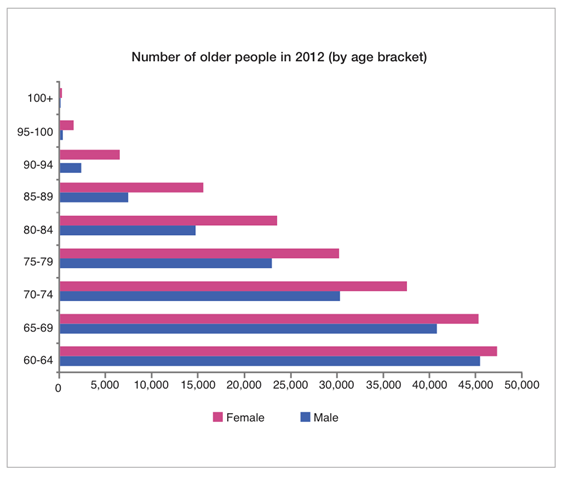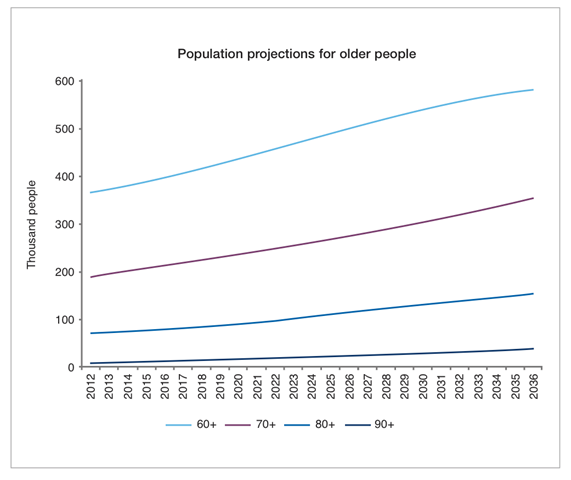Age in statistics
An overview of Northern Ireland’s older population and the expected future demographic trends.
Life expectancy at birth in Northern Ireland stood at 77.1 years for men and 81.5 years for women in 2008-2010, according to provisional estimates. These figures are just under those for the whole of the UK (78.2 years male and 82.3 female). The Republic’s life expectancies were 76.8 for men and 81.6 for women in 2006.
Within the province, life expectancy was lowest in Belfast (73.4 years for men and 79.8 years for women) and highest around the Sperrin Mountains: 79.4 years for men in Magherafelt and 83.2 years for women in Limavady.
State pensions were first paid out to the UK’s older people on 1 January 1909, for those aged 70 or older. Pensions policy is technically devolved but, in practice, maintained at parity with Britain.
The starting age is 65 for men and 61 or 62 for women, with the female age being increased incrementally to 65 by November 2018. The UK Government intends to raise the age (for men and women together) to 66 between then and October
2020, to 67 at some point between 2026 and 2028, and to 68 between 2044 and 2046.
Northern Ireland is thought to have 234 centenarians at present: 200 women and 34 men. However, by 2036, the province could have 2,467 people (1,733 female and 734 male) aged 100 or over. At the same time, the proportion of over 60s is likely to rise from 20.1 to 29.1 per cent.
A Commissioner for Older People, Claire Keatinge, was appointed in November 2011 and the Office of the First Minister and Deputy First Minister is due to publish the Executive’s draft strategy for older people this autumn.
Source: NISRA







